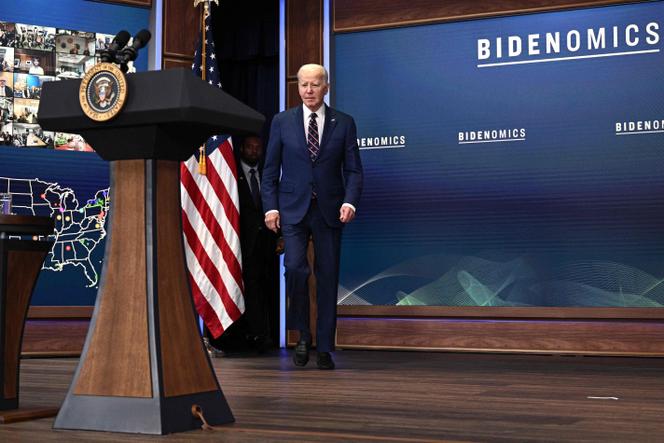


Unexpected, remarkable, phenomenal... On Thursday, October 26, economists had strong praise for the US Department of Commerce's first estimate of third-quarter gross domestic product (GDP). In fact, annual growth was 4.9%, well above the 2.1% rate recorded between April and June, and even higher than the 4.7% forecast by a consensus of economists. Compared with the previous quarter, the increase was 1.2%.
"US third quarter GDP grew at the fastest rate since 2021," said James Knightley, international economic specialist at ING Bank. President Joe Biden immediately issued a statement calling the results "a testament to the resilience of American consumers and American workers, supported by Bidenomics."
At first glance, it seems as if the Federal Reserve's interest rate hikes are having little effect on economic activity. As a result, the recession so feared for months now seems a long way off, much to the surprise of many observers. "I never believed we would need a recession to bring inflation down," added the Democratic occupant of the White House, who is up for re-election in the November 2024 presidential election.
Looking at the details, this strong figure is largely due to US consumption, which represents the main driver of the economy. Between July and September, there was a 4% increase in consumption, following a 0.8% rise in the second quarter. Notably, spending on durable goods, such as household appliances or automobiles, surged by 7.6%. Paul Ashworth, chief North America economist at Capital Economics, observed that this indicates households are weathering the Federal Reserve's credit cost increase effectively. Especially as the labor market is holding up surprisingly well – the unemployment rate was just 3.8% of the labor force in September, a month in which the country created 336,000 jobs, twice as many as expected.
Inflation continues to erode purchasing power, however, and as savings set aside during the pandemic have been depleted, Americans have started to dip into their wallets. The savings rate, which peaked at over 30% in 2020, fell back to just 3.8% in September, according to Fed data. In May, it was still 5.3%. In other words, "consumption can’t continue to defy gravity for much longer," said Ashworth.
Third-quarter activity was also boosted by rising inventories, which contributed 1.3 points to growth, and not least by government spending, which rose by 4.6% – including 8% for military spending. Ludovic Subran, chief economist of the Allianz Group, added: "The various grants and subsidies associated with the Inflation Reduction Act are being disbursed at full speed ahead of 2024, an election year," noting that the US budget deficit is approaching 7% of GDP. "So far, the recession-avoidance strategy is working, but it's expensive."
You have 50% of this article left to read. The rest is for subscribers only.
